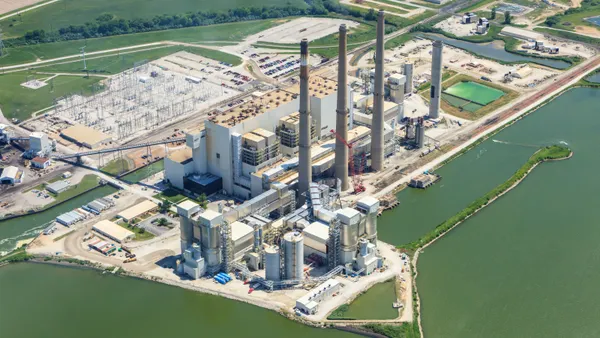Despite the challenges facing the U.S. electric utility industry, most utility executives remain confident in the sector's future.
But the future will be different from the past, and insiders know it. Utility Dive's recent survey of over 400 electric utility executives reveals the industry knows it needs to develop new business models.
Everyone in the industry appears to be asking themselves — what will the utility of the future look like? And how will it get there?
That was the thinking behind Utility Dive's second annual State of the Electric Utility survey. If you want to read the whole thing, you can find this year's report here. (Last year's report is here.)
But if you're pressed for time or just like a sneak preview, here are some of the highlights from this year's report.
Old challenges, new opportunities
Can you guess what's keeping utility executives up at night?
It's old age — the age of a century-old power grid that's not always up to the task of reliably integrating high levels of renewables and distributed energy resources. It's the age of a utility workforce that's closer to retirement than the other way around. And it's the age of a regulatory model that never accounted for the market forces we're seeing today.
Despite these challenges, utility executives today see immense opportunity in emerging areas. The emergence of electric vehicles, energy storage, smart technologies and even rooftop solar are an opportunity for utilities to bring new services to consumers — or at least build out the smart grid platform on which they will rely. But without first solving their most pressing challenges, utilities won't find it easy to seize new opportunities.
The future of the U.S. fuel mix
If you want to gaze into the crystal ball for what the U.S. power supply will look like in 20 years, look no further.
It's hard to predict exactly what percentage of the overall mix any fuel will make up, but the overall trends are clear. Utilities see coal and oil on the decline, while natural gas, solar, wind, energy efficiency and distributed energy resources are on the rise.
Keep in mind these are the current trends according to utilities. The decisions made by policymakers today will ultimately shape the utility fuel mix for years to come.
The utility business models of tomorrow
With the restructuring of the 1990s and the new normal of low demand growth, the utility profit centers of the past — power plants and electricity sales — may not cut it anymore. (Transmission remains a safe bet for utilities, however.)
Utilities see themselves moving away from traditional business models towards new ones, such as a smart integrator or energy services utility. At the heart of these new utility models is a renewed focus on the customer relationship. If utilities want to seize emerging opportunities, such as energy efficiency or rooftop solar, they will need to engage with and service their customers in new ways.
While utility executives know they need to change the old models, they're just not sure about the best way to do it. The big challenge is that there's no proven utility business model for many of these new services today — and innovation is hardly the industry's strong suit.
Want to read more? Check out the full results and analysis in Utility Dive's State of the Electric Utility report, including a closer look at what utilities think about the aging workforce, grid security and rooftop solar. You can download the full report here.














